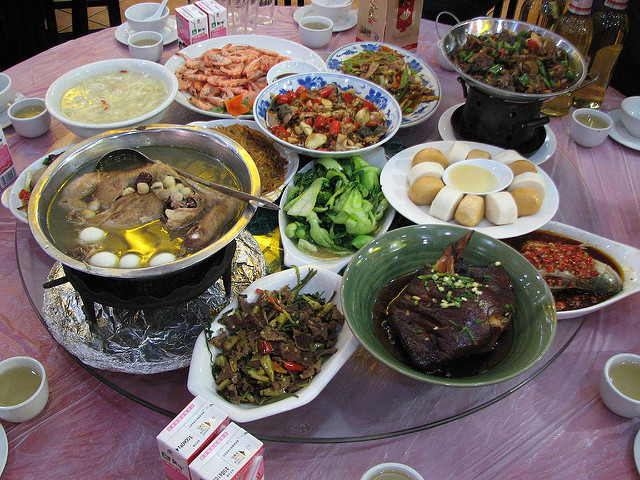Introduction
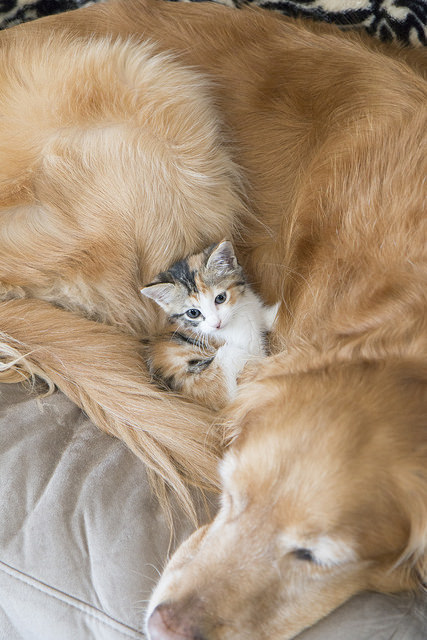 You have probably watched a movie, read a book, or even seen a commercial that reminded you of something else you have seen, read, or experienced before. In this lesson, you will learn how to read a text and watch a video and then make connections between the two. Reading different kinds of texts, watching different kinds of media, and making connections among them is a useful skill. If you’re writing a persuasive essay, or if you’re reading for information and need to make conclusions, you may have to make connections among several sources. A news story you saw about a dog that raised an abandoned kitten as her own, for example, might remind you of a fairy tale about a boy who was raised by a pack of wolves. You might then come to a conclusion about creatures that are raised in the wild. These connections are more than just trivia or nice-to-know moments. They can help you dig deeper into the text and enhance your understanding of what you read so you make sense of your world.
You have probably watched a movie, read a book, or even seen a commercial that reminded you of something else you have seen, read, or experienced before. In this lesson, you will learn how to read a text and watch a video and then make connections between the two. Reading different kinds of texts, watching different kinds of media, and making connections among them is a useful skill. If you’re writing a persuasive essay, or if you’re reading for information and need to make conclusions, you may have to make connections among several sources. A news story you saw about a dog that raised an abandoned kitten as her own, for example, might remind you of a fairy tale about a boy who was raised by a pack of wolves. You might then come to a conclusion about creatures that are raised in the wild. These connections are more than just trivia or nice-to-know moments. They can help you dig deeper into the text and enhance your understanding of what you read so you make sense of your world.
You may be familiar with the story of Mowgli from Rudyard Kipling’s The Jungle Book. Read a summary of the story below.
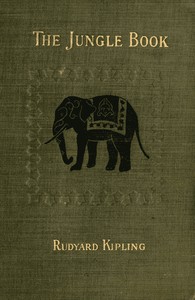
Mowgli is a boy who was stolen as a baby and raised by wolves. He is taught to communicate with the wolves and other animals and lives with them for many years. Eventually, Mowgli disobeys the laws of the jungle because he is human and can think for himself. Mowgli ends up in a village and is rescued by a man and woman who think he is their son. He learns the ways of humans, but he longs to return to the jungle. In the end, Mowgli can be friends with the wolves, but he is no longer part of the wolf pack. Mowgli is not quite a man and not quite a wolf.
Now, watch this video of Kwibi, a gorilla who was reunited with the man who raised him after he had not seen the man for five years. Think about what connections you can make between Kwibi and Mowgli.
Think about the answers to the following questions, and then check your understanding. How are Mowgli and Kwibi similar? How are they different?
Sometimes you need to understand information from multiple texts or from texts and other kinds of media in order to write about them or take part in a class discussion. In this lesson, you will learn strategies for making connections between texts and other media and providing evidence that supports those connections.
Images used in this section:Source: Dorothy loving on Bentley, praline301, flickr Source: Project Gutenberg
Take a Closer Look
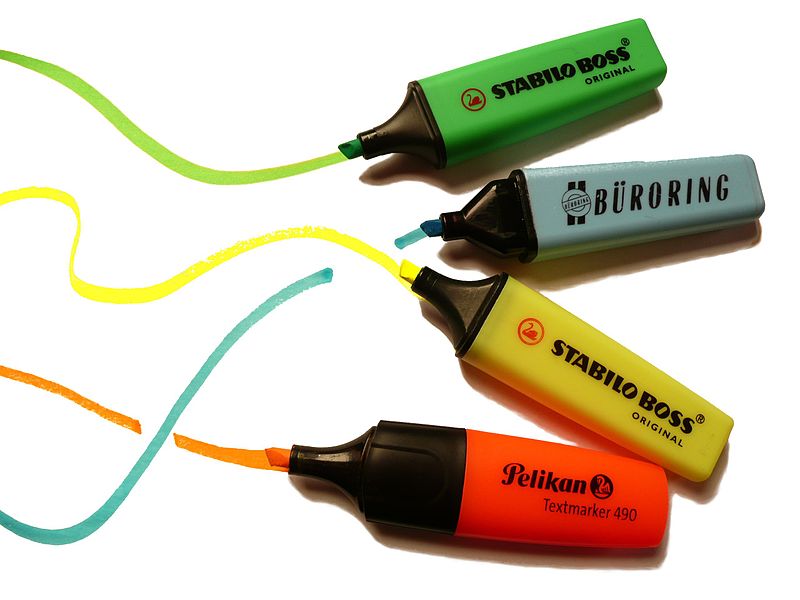
The best way to understand and remember what you read is to make notes about, or annotate, your text. This means you need to mark up your text. If you own the book, or if you have a photocopy, you can write directly on it. But what if you are working online, reading a library book, or would rather not mark up the pristine pages of your book? For books, you can use removable highlighter tape or sticky notes. For online texts, you’ll need to take the notes on paper using the advice outlined below.
Keep reading for some tips and tricks for annotating literary texts without turning them into a confusing, multicolor jumble.
Benefits of annotating
- Slows down your reading so that you pay closer attention to details
- Helps keep track of questions you may have about the text
- Records textual evidence (supporting details from the text) that you will need to support conclusions you make
Click on the radio buttons below to get more information about annotating.
In the next section, you will think about what to annotate in a text about cultural differences that show up at an important dinner; you will then use your mental notes about the story to make connections to a video about cultural differences represented by two kinds of sandwiches.
Images used in this section:Source: photosteve101 / planetofsuccess.com/blog, CC BY 2.0
Read and Annotate the Text
The following selection is by Chinese-American author, Amy Tan.
To help you decide what is important enough to annotate, keep these questions in mind as you read the text for the first time.
- What are the differences in the foods served at a traditional American Christmas dinner and the Chinese-American Christmas dinner that Tan describes?
- How does the narrator feel about her mom’s dinner?
- What does the young man think about the foods served to him?
- The different foods served at Christmas dinner highlight differences in American and Chinese cultures. What do you think the narrator could have done differently to make the dinner less embarrassing to her?
“Fish Cheeks” by Amy Tan
I fell in love with the minister’s son the winter I turned fourteen. He was not Chinese, but as white as Mary in the manger. For Christmas I prayed for this blond-haired boy, Robert, and a slim new American nose.
When I found out that my parents had invited the minister’s family over for Christmas Eve dinner, I cried. What would Robert think of our shabby Chinese Christmas? What would he think of our noisy Chinese relatives who lacked proper American manners? What terrible disappointment would he feel upon seeing not a roasted turkey and sweet potatoes but Chinese food?
On Christmas Eve I saw that my mother had outdone herself in creating a strange menu. She was pulling black veins out of the backs of fleshy prawns. The kitchen was littered with appalling mounds of raw food: A slimy rock cod with bulging eyes that pleaded not to be thrown into a pan of hot oil. Tofu, which looked like stacked wedges of rubbery white sponges. A bowl soaking dried fungus back to life. A plate of squid, their backs crisscrossed with knife markings so they resembled bicycle tires.
And then they arrived—the minister’s family and all my relatives in a clamor of doorbells and rumpled Christmas packages. Robert grunted hello, and I pretended he was not worthy of existence.
Dinner threw me deeper into despair. My relatives licked the ends of their chopsticks and reached across the table, dipping them into the dozen or so plates of food. Robert and his family waited patiently for platters to be passed to them. My relatives murmured with pleasure when my mother brought out the whole steamed fish. Robert grimaced. Then my father poked his chopsticks just below the fish eye and plucked out the soft meat. “Amy, your favorite,” he said, offering me the tender fish cheek. I wanted to disappear.
At the end of the meal my father leaned back and belched loudly, thanking my mother for her fine cooking. “It’s a polite Chinese custom to show you are satisfied,” explained my father to our astonished guests. Robert was looking down at his plate with a reddened face. The minister managed to muster up a quiet burp. I was stunned into silence for the rest of the night.
After everyone had gone, my mother said to me, “You want to be the same as American girls on the outside.” She handed me an early gift. It was a miniskirt in beige tweed. “But inside you must always be Chinese. You must be proud you are different. Your only shame is to have shame.”
And even though I didn’t agree with her then, I knew that she understood how much I had suffered during the evening’s dinner. It wasn’t until many years later—long after I had gotten over my crush on Robert—that I was able to fully appreciate her lesson and the true purpose behind our particular menu. For Christmas Eve that year, she had chosen all my favorite foods.
Now that you have read the text and thought about what you would annotate, complete the activity below. In each of the six slides, the bold font indicates important information that could have been annotated. Choose what you think the annotation is about.
Images used in this section:Source: Wedding Feast, Micah Sittig, flickr
Watch the Video and Make Notes
In this section, you are going to watch a video and use a different kind of annotation to help you make a connection to the first text, “Fish Cheeks.”
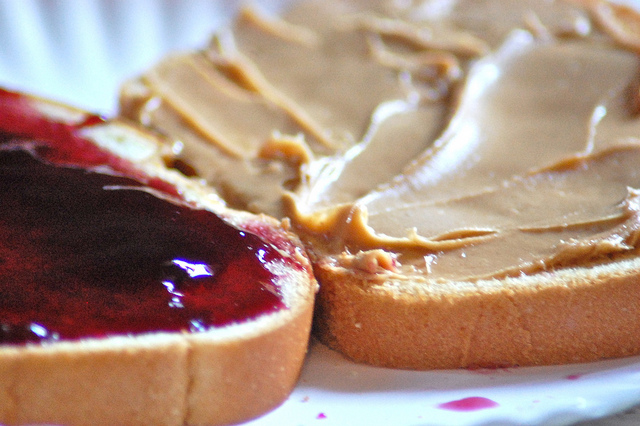
Using a double-entry journal
The graphic organizer below is a double-entry journal. On your own paper, make a chart similar to the one you see below. You will enter your observations about the video “The Sandwich Swap” on the left, and you will record the evidence that supports your observation on the right. See the example below:
| Observation | Evidence |
|---|---|
| Lily and Selma eat very different sandwiches that are representative of their respective cultures. | The video shows Lily eating PB&J, while Selma eats hummus and pita. |
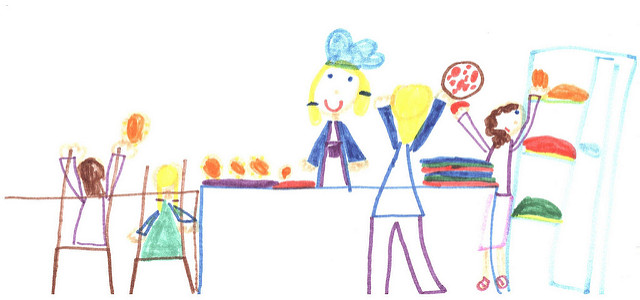
As you watch the video, pay particular attention to the similarities you see to Amy Tan’s “Fish Cheeks.” You may also want to consider these questions as you watch the video:
- How is Lily a little bit like Robert in “Fish Cheeks”?
- In “Fish Cheeks,” how are the narrator’s feelings toward her mother and father different from the girls’ feelings toward their parents in the video?
- In the video, how do the girls solve their problem with unfamiliar food?
- What are similar main ideas in the text and the video?
When you are finished watching and noting in your journal, check your understanding by comparing your notes to the journal entries below the video.
Here are some notes for the video “The Sandwich Swap.”
| Observations | Evidence |
|---|---|
| Both Lily and Selma think the other’s sandwich is yukky. | We see the thought bubbles of both girls with the words Ew and Yukky. |
| Lily hurts Selma’s feelings and their friendship. | Selma thinks of her mother fixing her sandwich that morning; she realizes her mother loves her very much, so she is hurt that Lily made fun of her sandwich. They don’t play together that day. |
| Their anger with each other spills over to their other friends. | There is a food fight in the cafeteria. |
| They figure out a way to make the situation better. | They clean up the cafeteria and suggest that the school have a day where everyone shares foods from other cultures. |
| Both the text and the video are about the idea that foods from different cultures, which might be unfamiliar, can be the reason for misunderstandings. | Neither girl had ever tasted the other’s sandwich, and each thought that they were strange and unfamiliar. |
In the next section, you are going to use the annotations from each selection to complete an activity.
Images used in this section:Source: Katherne Hitt 2010
Source: Christopher Tassava 2010
Your Turn
Let’s see if you can make connections between the story about one young girl’s Christmas and the video about the sandwiches. You will read the statements below and decide in which of the three places the information belongs: “Fish Cheeks” only, “The Sandwich Swap” only, or a third box that contains information that is correct for both the text and the video.
Resources
Bawab, Z. (2012, August 23). The sandwich swap (English). [YouTube]. Graduation Project from PSUT. Retrieved from https://www.youtube.com/watch?v=MvEr6FsVoBI&list=PLE9YorWc5G72UNEFqEGGe7ePMGKE0KUXN
Tan, A. (1987). Fish cheeks. CommonLit. Retrieved from https://www.commonlit.org/texts/fish-cheeks
